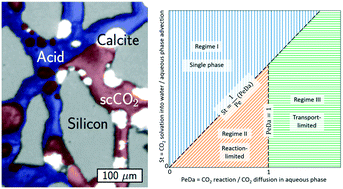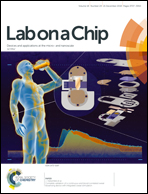Mechanisms of multiphase reactive flow using biogenically calcite-functionalized micromodels
Abstract
Dissolution of carbonate minerals in porous media is important to many instances of subsurface flow, including geological carbon dioxide (CO2) sequestration, karst formation, and crude-oil reservoir stimulation and acidizing. Of particular interest, geological CO2 storage in deep carbonate reservoirs presents a significant long-term opportunity to mitigate atmospheric carbon emissions. The reactivity of carbonate reservoirs, however, may negatively impact storage formation integrity and hence jeopardize sequestered CO2 storage security. In this work, we develop a novel biogenically calcite-functionalized microvisual device to study the fundamental pore-scale reactive transport dynamics in carbonate formations. Importantly, we discover a new microscale mechanism that dictates the overall behavior of the reactive transport phenomenon, where the reaction product, CO2, due to carbonate rock dissolution forms a separate, protective phase that engulfs the carbonate rock grain and reduces further dissolution. The presence of the separate, protective CO2 phase determines overall dissolution patterns in the storage reservoir and leads to formation of preferential leakage paths. We scale these results using nondimensional numbers to demonstrate their influence on industrial CO2 storage security, safety, and capacity.



 Please wait while we load your content...
Please wait while we load your content...